These Sultana Scones are a classic addition to morning or afternoon tea. Made with buttermilk and butter, they are flaky and tender on the inside and crisp on the outside. The addition of plump juicy sultanas adds a slightly chewy texture to the soft dough. Flavoured with lemon zest and spices, the aroma as they bake is warm and comforting. There’s something about fresh-from-the-oven scones; make yourself a tea or coffee to enjoy while they are still warm, spread with a generous amount of butter.
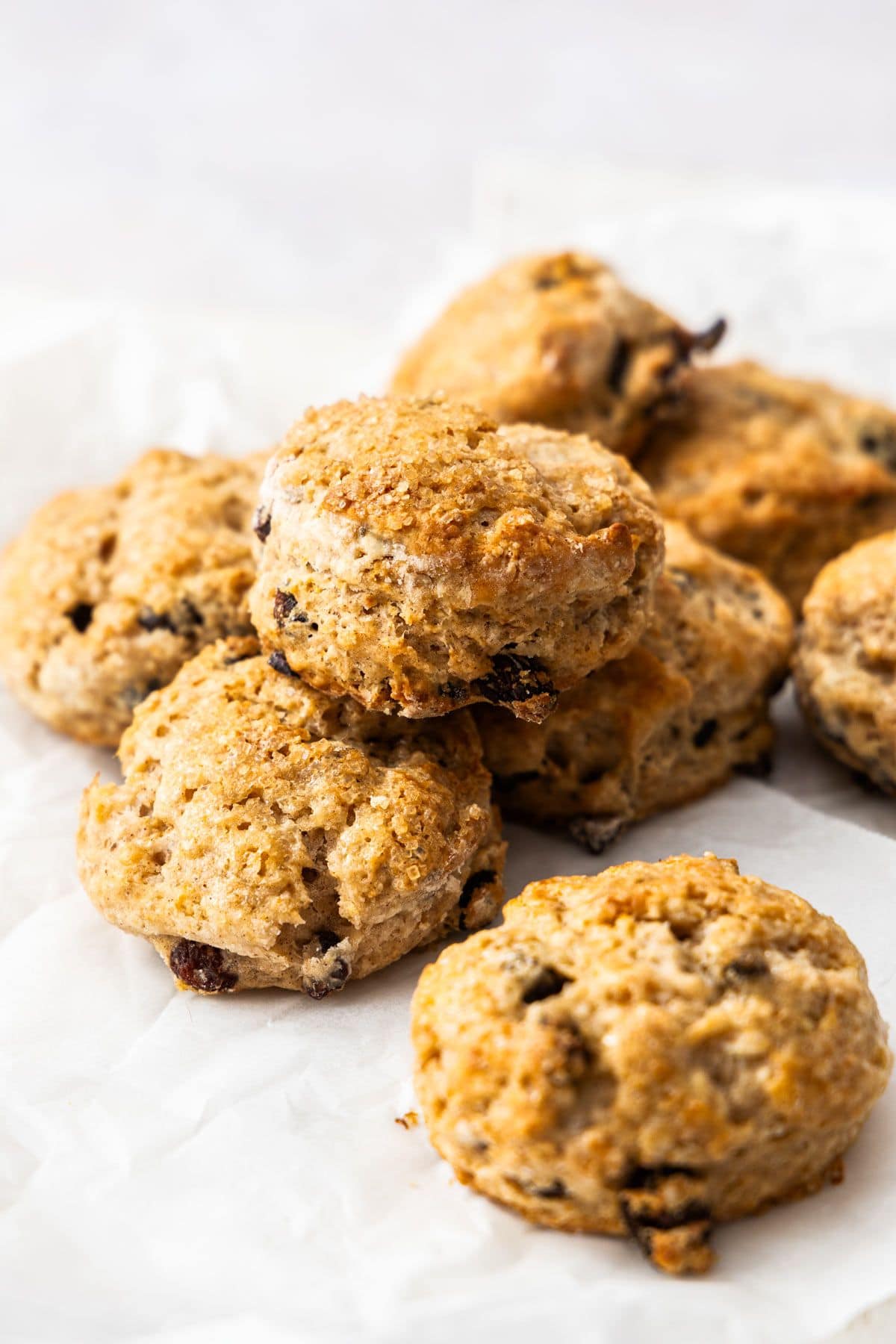
Why You'll Love This Recipe:
- The Sultana Buttermilk Scones are made from simple, readily available ingredients.
- Our easy-to-follow instructions will show you it is not difficult to make scones.
- This humble baked item is proof that the simple things in life are often the best.
- There’s no rubbing butter into the flour; instead, we add grated, frozen butter to the flour. It makes the scones lighter and flakier.
- You can be eating warm scones in 30 minutes.
Recipe Inspiration: this is another variation on our plain Buttermilk Scones. A sultana scone is a classic addition to an afternoon tea, and we love the warming spices they're flavoured with.
Ingredients and Substitutions:
Please see the recipe card further along in the post for exact quantities of ingredients and the full method.
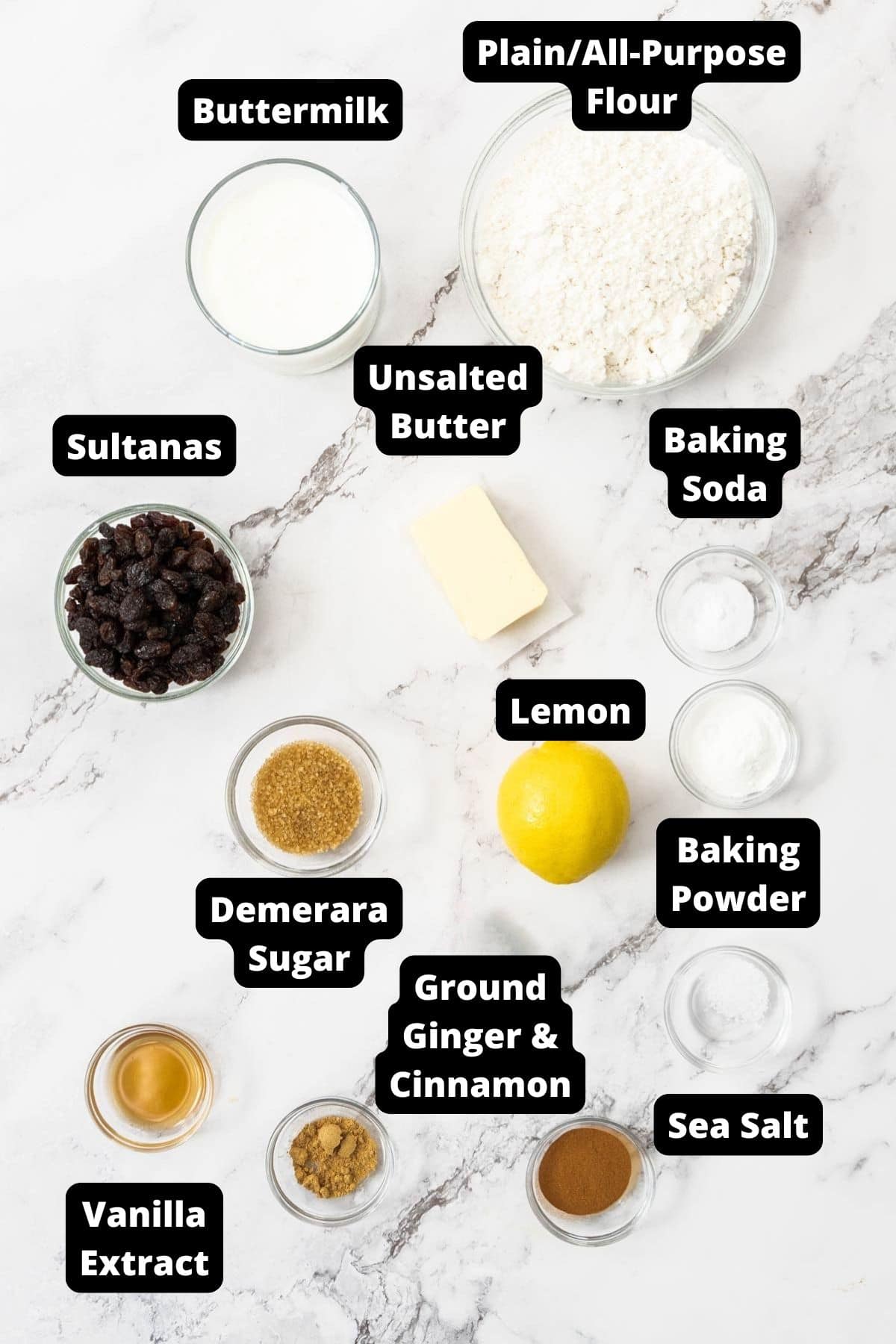
- Plain/all-purpose flour: this is a versatile flour; it does not contain a raising agent.
- Baking powder: the main raising agent in the scones.
- Bi-carb/baking soda: the acidic buttermilk reacts with the baking soda, helping the scones to rise and become lighter.
- Sea salt: a small amount of salt enhances the flavours in the scones. We use cooking sea salt.
- Ground cinnamon and ground ginger: these spices are perfect with the sultanas, adding warmth and appealing aroma.
- Lemon zest: the essential oils in the lemon rind add bright flavour to the scones.
- Caster/superfine sugar: a small amount adds gentle sweetness.
- Sultanas: also known as golden raisins. They add sweetness and a chewy texture to the scones.
- Unsalted butter: we use unsalted butter so that we can control the amount of salt in the recipe. The amount of salt added to butter varies enormously.
- Buttermilk: we use buttermilk in the scone dough and as a glaze for the top of the scone. It adds tang and a complex flavour.
- Vanilla extract: vanilla that is naturally extracted from the vanilla bean will give the best flavour.
- Demerara sugar: for crunch, we add a sprinkle of this sugar to the top of the scone. Turbinado is a good substitute, although the sugar crystals are not quite as large as demerara and therefore not quite as crunchy.
Variations:
All-purpose flour: the recipe has been tested successfully with self-raising flour. Omit the baking powder but still use the baking soda.
Buttermilk: you can make your own “almost buttermilk”. Simply add 3 teaspoons of lemon juice to 205 ml of whole milk and allow to stand for 10 minutes. It isn’t as good as real buttermilk but will do when you find yourself without.
Lemon zest: orange zest would be a good alternative.
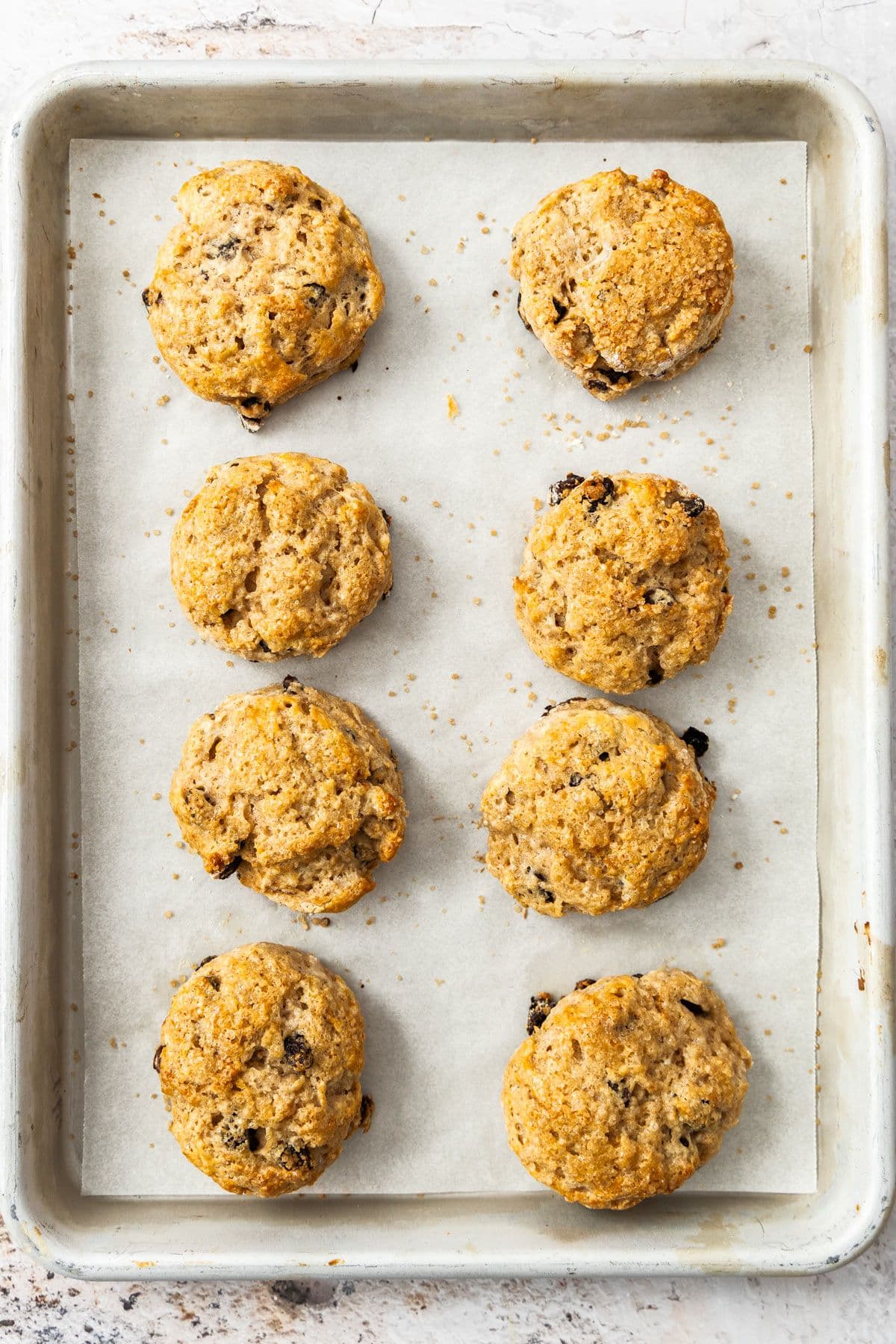
How To Make Sultana Scones:
Please see the recipe card further along in the post for exact quantities of ingredients and the full method.
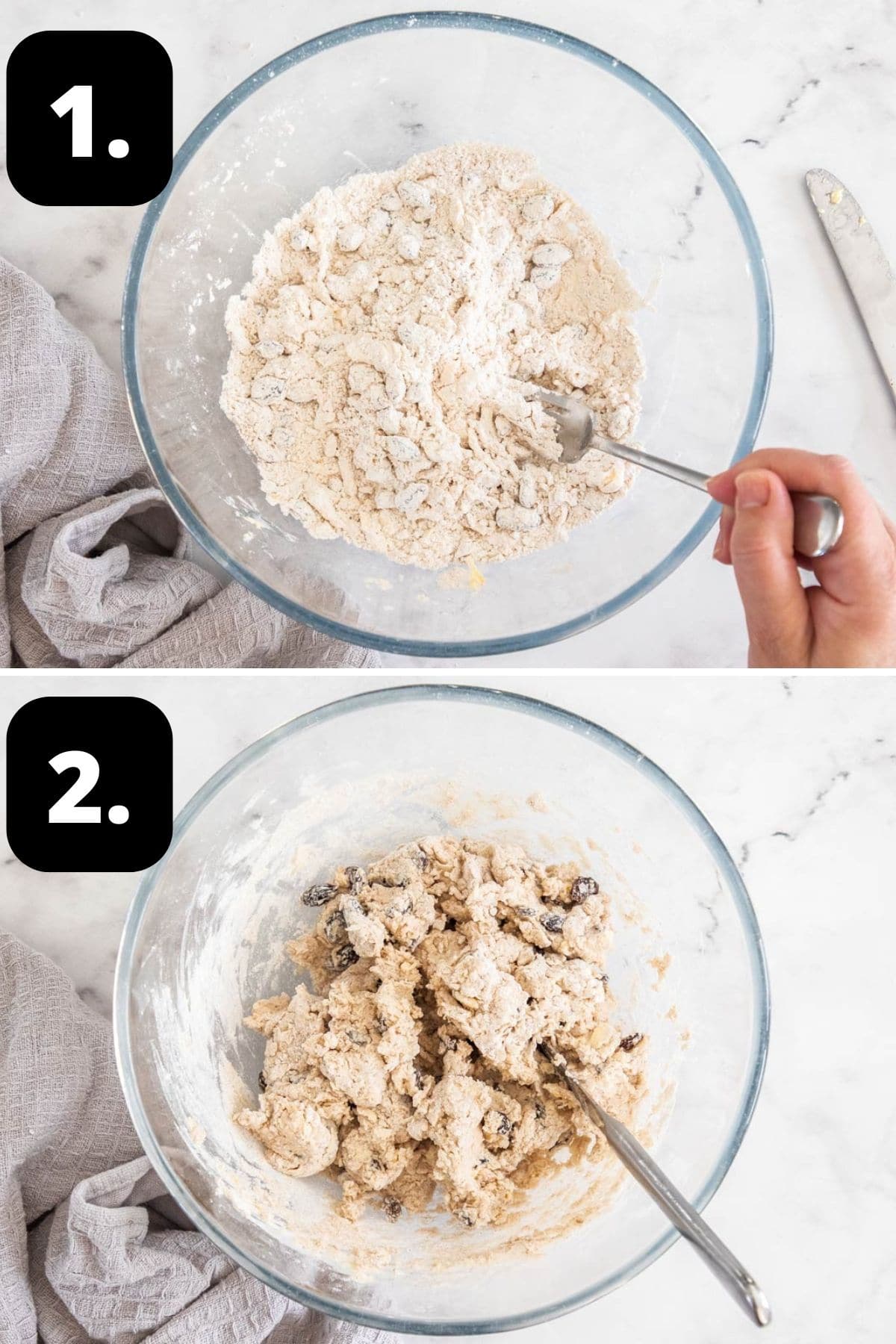
1 – Prepare your dry ingredients:
To a medium size bowl, add flour, baking powder, baking soda, salt, ground cinnamon, ginger, lemon zest and sugar. Whisk ingredients well to combine.
Grate frozen butter into the flour mixture and toss with a fork to combine the butter. Add in the sultanas.
2 – Add in your buttermilk:
Make a well in the centre and add buttermilk.
Use a flat bladed knife and stir quickly until ingredients are just combined.
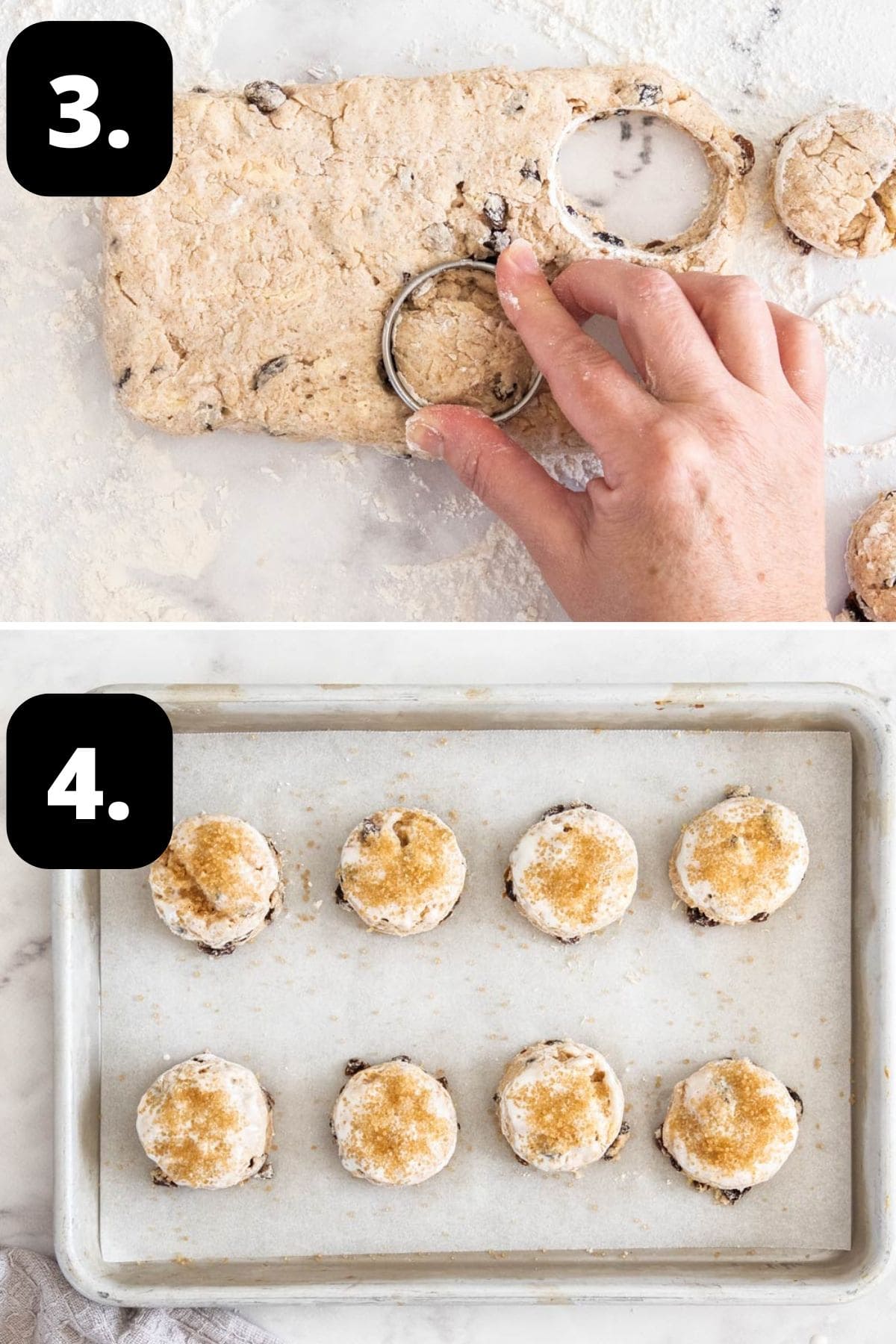
3 – Cut out the scones:
Turn the dough onto a lightly floured surface and gently bring the mix together. Using your fingertips, pat the dough to a round.
Use a floured cutter to cut out eight circles and re-shape the dough as necessary.
4 – Bake the scones:
Place the scones onto the prepared baking tray. Lightly brush the tops of the scones with buttermilk, then sprinkle lightly with demerara sugar.
Place the tray in the oven and bake until the scones are deep golden.
Remove from the oven, place onto a cooling rack, or if you’re like me, enjoy immediately.
Hint: when combining the ingredients, use a light hand and do not over mix the dough or it will become tough. As well, for a better rise and scones with straight sides, do not twist the cutter, push straight down.
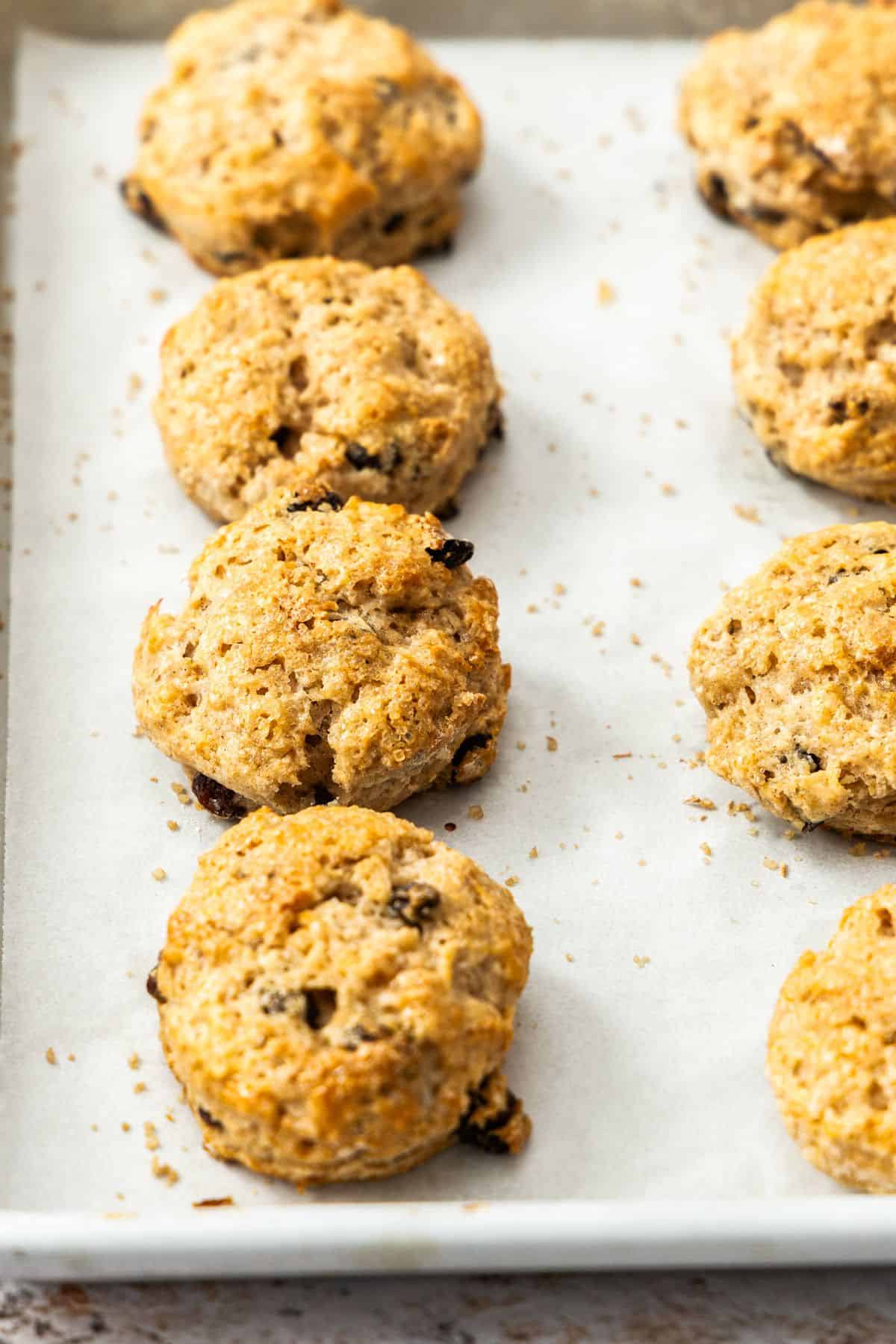
Tips for Success, Storage and FAQs:
Scones are at their best when eaten shortly after baking, but you can store them in an airtight container or on a plate covered with cling wrap for up to three days. Store them at room temperature, the fridge tends to make them hard. They reheat well, and details are below.
Yes, they can. When they have cooled, place them in an airtight container and freeze up to three months. Reheat as below.
Place them on a baking tray or a small ovenproof platter, cover loosely with foil and reheat in a 180 degrees C (355 F) oven for about 8 minutes. Remove the foil for the last 2 minutes to slightly re-crisp the exterior.
We have successfully made this recipe using a good quality gluten-free flour that contains xanthan gum. The hydration level is different, so we needed an extra 40 ml of buttermilk with the brand of flour we used. The scones do not rise as much but they are still delicious and a great gluten-free option.
Top Tip:
For the best result, ensure that your ingredients are cold.
For the most tender scones, handle the dough lightly. Overworking the dough will develop the gluten and make the scones tough.
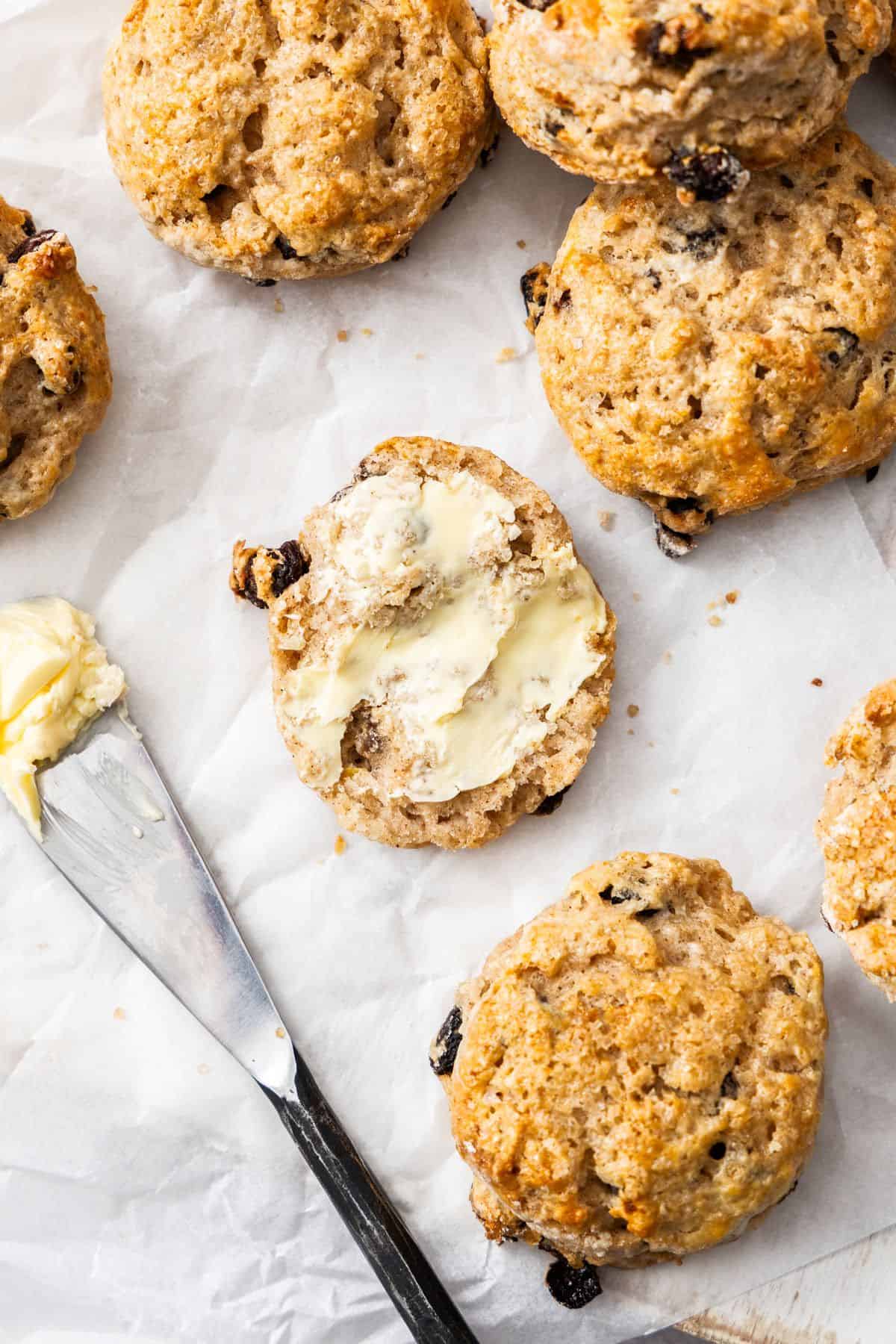
Serving Suggestions:
You will find many ways to enjoy these Sultana Buttermilk Scones. Some suggestions are:
- Serve them for breakfast; they are a great alternative to toast.
- They are ideal for a quick, no-fuss morning tea. And who doesn’t love a warm scone? They are delicious with tea or coffee.
- At their simplest, serve them plain, still warm from the oven, or spread them generously with butter.
- For the ultimate scone enjoyment, spread with jam and top with whipped cream. Two of my favourite jams are Peach Jam and Mixed Berry Jam.
- Take them on a picnic or to a potluck; they travel well.
These Sultana Buttermilk Scones are certain to be a family favourite. And unlike many baked items, you do not need to wait impatiently for them to cool down, the best way to enjoy a scone is fresh from the oven.
Alex xx
More Delicious Recipes For You To Try:
Stay in touch!
Follow me on Facebook, Pinterest, Flipboard and Instagram and subscribe to my newsletter.

Sultana Scones
Please note:
For accuracy, when weights are provided, we recommend weighing your ingredients. This will produce the best results. All oven temperatures listed are for fan forced.
Ingredients
For the Sultana Scones:
- 225 g plain/all-purpose flour + more for rolling out as needed See Note 1
- 2 teaspoon baking powder
- ¼ teaspoon baking/bi-carb soda
- ¼ teaspoon sea salt
- 3 teaspoon caster/superfine sugar
- 1 teaspoon ground cinnamon
- ½ teaspoon ground ginger
- ½ teaspoon lemon zest - finely grated
- 50 g unsalted butter – frozen
- 100 g sultanas/golden raisins
- 220 ml buttermilk – kept chilled
- 1 teaspoon vanilla extract
For the Topping:
- 1 tablespoon buttermilk See Note 2
- 3 teaspoon demerara/turbinado sugar
Instructions
- Line a baking tray with non-stick baking paper.Preheat your oven to 200 degrees C. (390 F)
- To a medium size bowl, add the flour, baking powder, baking soda, salt, sugar, spices and lemon. Whisk ingredients well to combine, then mix through the sultanas.
- Using a box grater, grate the frozen butter into the flour mixture.Use a fork to toss the flour to combine the butter - you still want to be able to see the butter (makes for flaky scones!), this is just to avoid it clumping.
- Make a well in the centre and add the buttermilk and vanilla extract. Use a flat bladed knife and quickly stir to combine the ingredients. The dough should be slightly sticky and soft. Do not over mix.
- Turn out the dough onto a lightly floured surface. Gently bring the mix together.Use your fingertips to gently pat out the dough to a round, about 3 cm (1 ¼ inches) deep. Use a floured 5 cm round cutter to cut out 8 circles, re-shaping the dough as necessary. Press the cutter straight down - do not twist it.
- Place the scones onto the baking tray.Lightly brush the tops of the scones with buttermilk and sprinkle with demerara sugar.Place the tray into the oven and bake for 13-15 minutes, or until a deep golden.
- Enjoy while still warm or place the scones on a cooling rack. The scones are best the day they are made.We recommend breaking the scones open with your hands instead of cutting in half with a knife as this can compress the scone and make them less fluffy.
Notes
- Flour: if you prefer, you can also use self-raising flour. Omit the baking powder, but still add the baking soda.
- Tablespoon: we use a standard Australian tablespoon which is 20 ml (4 teaspoons). For readers located elsewhere in the world, please use 1 tablespoon + 1 teaspoon for each listed tablespoon.
- Gluten-free: we have successfully made this recipe using a good quality gluten-free flour containing xanthan gum. The hydration level is different, and an extra 40 ml of buttermilk was necessary with the brand of flour we used. The scones do not rise as much/are flatter, but they still taste delicious, and are a fantastic gluten-free option.
- Storage: although scones are at their best when eaten shortly after baking, you can store them on a plate covered with cling wrap or in an airtight container for up to 3 days. They respond well to being reheated – see below. Store them at room temperature if possible - the fridge tends to make them hard.
- Freezing: when they are completely cool, place them in an airtight container, or wrapped thoroughly to prevent freezer burn, clearly labelled with their name and date, and freeze for up to 3 months. Reheat as below.
- Reheating: the best way is to place them on a baking tray or small ovenproof platter, cover loosely with foil and reheat in a 180 degrees C (355 F) oven for about 8 minutes. Uncover for the last 2 minutes to re-crisp the exterior a little.
Nutrition Estimate:
Nutritional Disclaimer:
The nutritional information is an estimate only, and is derived from online calculators. For accurate results, we recommend calculating the nutritional information based on the ingredients and brands you use.




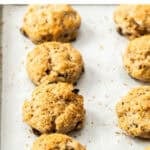

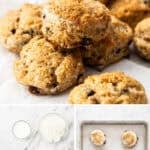

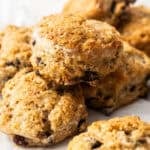



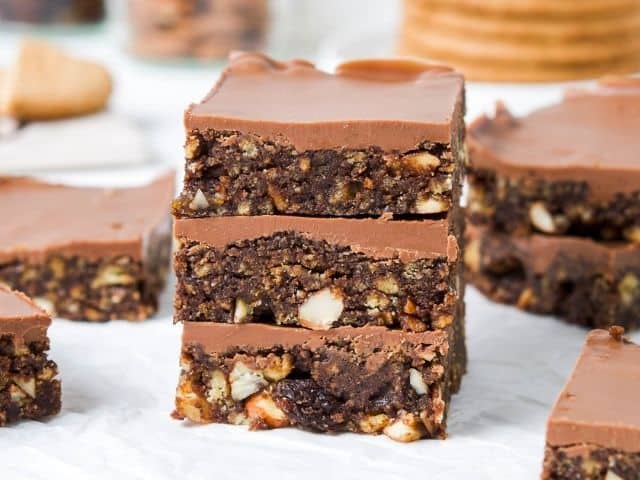
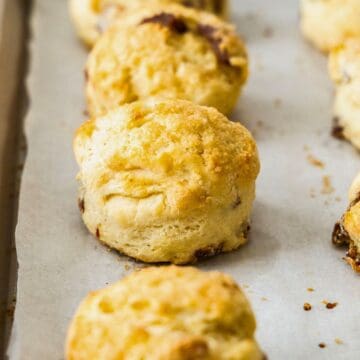
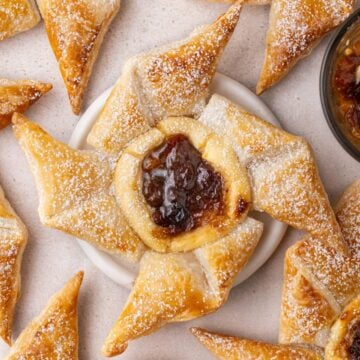
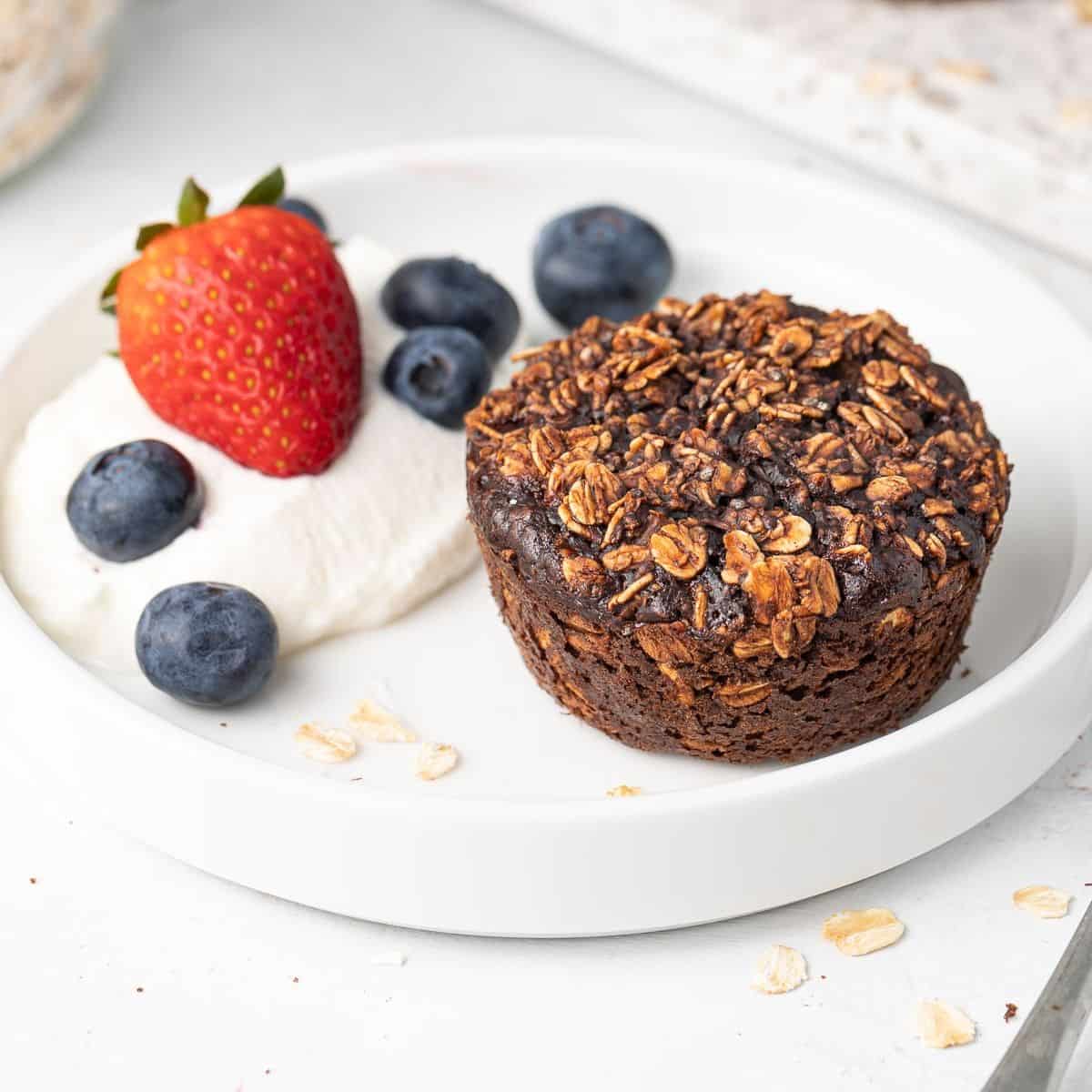
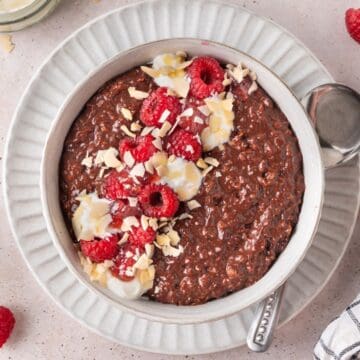
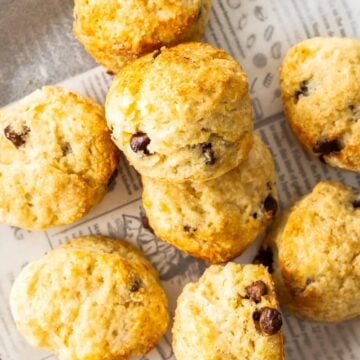
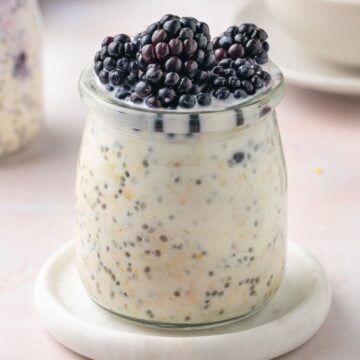
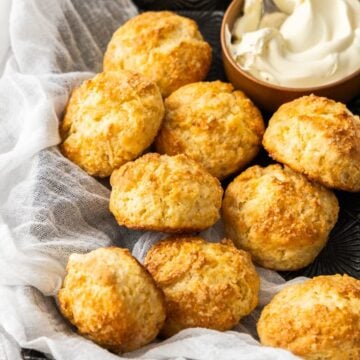
Carol says
My niece made some of your nectarine chutney and brought it over from W.A to me in Victoria. It is delicious! I had it on dry biscuits with cheese, it’s quite different to any chutney I have tried. I have your recipe and intend to make some of it.
Alexandra Cook says
Thank you, Carol!
I am so pleased to hear this.
Alex xo